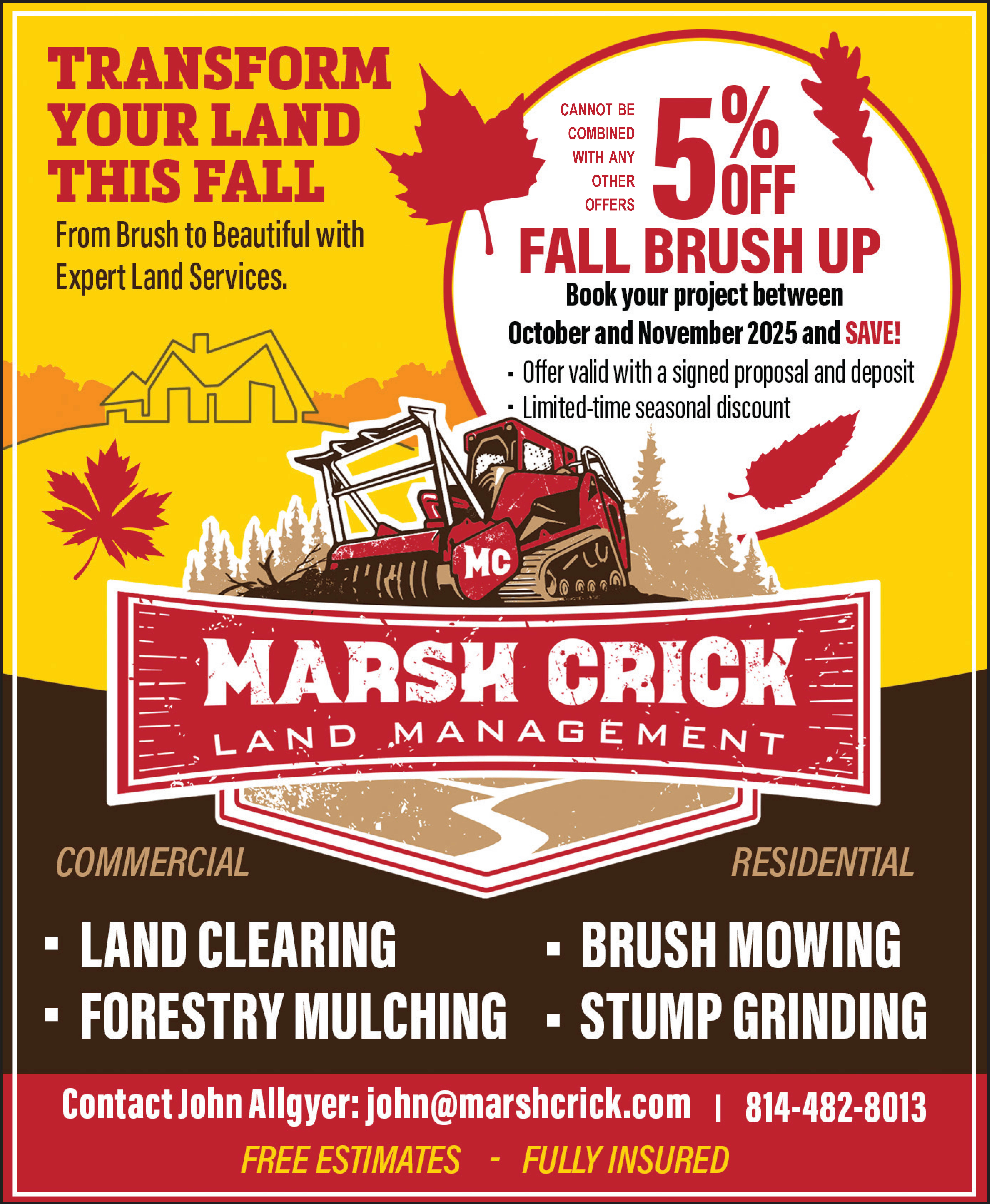By Ken Hunter
Spring is in the air, and for the turkey hunting enthusiast, that means it’s time to locate some potential gobbler hunting spots. The spring turkey season is set to start statewide on May 2 and run until May 30. A big part of spring gobbler hunting is actually locating good hunting spots sometime before the opening day, and sometimes that can be more challenging than the actual hunt.
There are differing thoughts on how to locate spring gobblers; some hunters like to hike into potential locations looking for turkey signs and listening for gobbles while others prefer to watch and listen from a distance. I know of several successful spring gobbler hunters who hike into potential areas and even make use of several different calls to get a response. Admittedly most of those hunters will usually refrain from using a turkey call and will often rely on a barred owl call at the end of the day; a gobbler response at this time also gives away the likely roosting spot. Knowing a gobbler roosting location can be valuable when it comes time to set up in the morning for the day’s hunt. Another call that can bring results is a crow call.
A lot of spring gobbler hunters are a bit reluctant to traipse into their potential hunting locations before the season opens, hoping instead to avoid spooking or disturbing their prey. Staying out of the “heart of your hunting area” doesn’t necessarily mean you can’t do any beneficial scouting. Past experience or relying on areas where you have seen birds in the past is a good start, especially if good roosting sights and good food sources are available. Although gobblers are definitely more interested in finding a mate than finding food, they may still be around good roosting sights and areas where they had acorns and beechnuts throughout the winter.
I personally tend to avoid roaming around too much in areas I plan to hunt, but I do try to observe and listen from a bit of a distance. I’ll admit it; when I go down the road in my vehicle, I’m always checking the fields and even the open woods for any sightings of turkeys — that’s why I prefer to have my wife drive if we are both out and about. Just this past couple of weeks, I have spotted several groups of turkeys in open fields as we drove by and there were gobblers fanned out in each sighting. One of those sightings was in a field only 50 yards from where I called in a nice gobbler for my granddaughter last spring.
As of this writing, I have not heard any gobbling yet, but I do often stop and listen from a “safe” distance. Even though I’ve yet to hear any gobbling, I’ve seen plenty of birds fanned out and displaying. Two weeks ago, a couple of us guys were invited up to a friend’s cabin, and shortly after we arrived, we looked out the window, and 50 yards away were five gobblers taking turns strutting.
While I try to avoid going into my hunting spots, I might, on occasion, make a quiet pass through an area looking for signs. Look for things like scratching and dusting sights, droppings (gobblers are J-shaped, and hens are a rounded pile), breast feathers (gobblers will have a black-tipped feather, hens do not) and tracks when possible.
Hopefully, your pre-season scouting will pay off, whether done from a distance or up close and personal.




Leave a Comment
Your email address will not be published. Required fields are marked with *